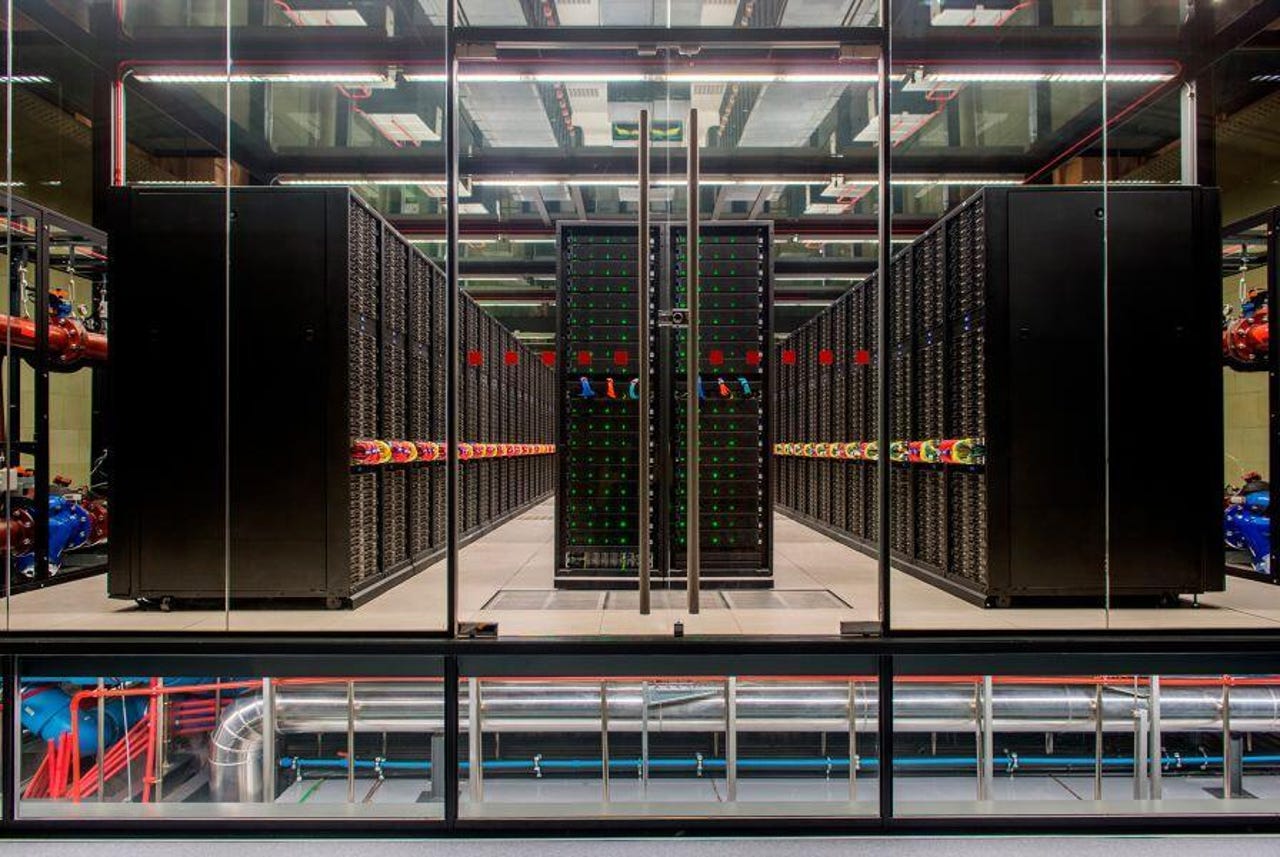Supercomputing can help address blockchain's biggest problem. Here's how


The MareNostrum 4 Supercomputer in Barcelona, Spain
Things are moving quickly in the crypto world, yet scaling up the technology – while preventing a surge in greenhouse gas emissions – won't be easy.
Producing digital coins is not environmentally friendly, to say the least. Bitcoin mining – one of the best-known implementations of blockchain – consumes around 110 Terawatt Hours per year, which is more than the annual consumption of countries such as Sweden or Argentina.
Supercomputers
Tesla, whose CEO Elon Musk said that crypto's energy use is "insane", will no longer be accepting bitcoins as payment due to climate change concerns – at least, until crypto mining becomes greener. Oddly enough, El Salvador recently announced that it would begin using power derived from volcanoes for Bitcoin mining.
SEE: IT Data Center Green Energy Policy (TechRepublic Premium)
Yet there are ways to counter blockchain's energy consumption pitfall while increasingly its scalability – that is to say, multiplying the number of transactions possible per second without creating bottlenecks, or losing reliability.
This shift is crucial, says Leonardo Bautista, senior researcher at Barcelona Supercomputing Center (BSC), as "centralized systems like VISA or Mastercard can handle 50,000 transactions per second, while Ethereum is capable of managing 15 to 20 transactions per second and Bitcoin seven to 10."
Bautista has been working with the Ethereum Foundation since 2018 to solve blockchain's challenges, using the Marenostrum supercomputer installed in the chapel of the BSC.
The project involves running open-source simulations to study how the speed of transactions on the blockchain could be increased using various techniques, such as sharding.
Sharding implies splitting a blockchain network into smaller partitions called 'shards'that work in parallel to increase its transactional throughput. In other words, it's like spreading out the workload of a network to allow more transactions to be processed, a technique similar to that used in supercomputing.
In the world of high-performance computers, ways to parallelize computation have been developed for decades to increase scalability. This point is where lessons learned from supercomputing come in handy.
"A blockchain like Ethereum is something like a global state machine, or in less technical words, a global computer. This global computer has been running for over five years on a single core, more specifically a single chain," Bautista tells ZDNet.
"The efforts of the Ethereum community are focused on making this global computer into a multi-core computer, more specifically a multi-chain computer. The objective is to effectively parallelize computation into multiple computing cores called 'shards' – hence the name of this technology."
The quest for a new standard
Bautista's team has also created the Kumo Crawler, a bot that skulks the Ethereum P2P network to detect problems and malicious behavior. This will help inform the implementation of Ethereum 2.0, a long-awaited upgrade of the network poised to increase scalability by more than 1,000 times while lowering its energy consumption up to 500 times.
This is expected to arrive in 2022, and could address the main headache of the network without sacrificing security or decentralization. "Currently, there is a fight for a new standard for creating and validating blocks on the blockchain, and Ethereum seems to be gaining the upper hand," says Marc Rocas, former president of the Blockchain Catalonia Association.
Ethereum plans to use the Proof of Stake (PoS) consensus mechanism, in addition to sharding and the beacon chain – the coordination mechanism that allows shards to remain in-sync with one another – to make the network "more secure, scalable and sustainable."
Indeed, one of the most persistent problems with public blockchains has to do with consensus mechanisms designed to confirm that transactions are valid and ensure that nobody is trying to alter blocks and do bad things.
The well-established model for doing so is Proof of Work (PoW). In order to add a block to the chain, Ethereum or Bitcoin miners must solve a complex puzzle that requires a huge deal of processing power. Only when the problem is solved does the network verify the legitimacy of the transaction.
However, this process is painfully slow – the network takes about 10 minutes to confirm each transaction. At the same time, as the number of transactions increases, so too does the cost of completing them. On the Ethereum network, the computational efforts required to perform transactions are known as 'gas', the cost of which is set by the miners according to the supply and demand of the network.
Other consensus mechanisms have been created to overcome the hurdles of the PoW method, one of the most popular being the Proof of Stake (PoS) model.
While PoW requires miners to solve a problem using brute processing power, PoS requires miners to stake a certain amount of cryptocurrency on the network. An algorithm then selects the block creator based on the user's stake; the bigger the stake, the higher the chances of validating the next block and receiving a reward.
If the network detects malicious behavior, the user loses their stake and right to participate in the network in the future. This provides a financial motivation not to do bad things.
SEE: What is quantum computing? Everything you need to know about the strange world of quantum computers
Ethereum wants to use PoS because the method is allegedly greener and cheaper, yet it's far from being perfect. "Proof of Work often comes in for bad press because it uses a large amount of electricity, but it's super reliable. In addition, what's the problem if the energy used is clean?" says Rocas.
"On the other hand, the issue some people have when discussing Proof of Stake is that it could create more inequalities as the more coins you can afford to buy, the more coins you can stake", he adds.
Energy efficiency is another challenge that supercomputers and blockchain have in common. The Marenostrum supercomputer installed at the BSC uses 1.3 MW/year. Fugaku, the fastest supercomputer in the world, uses about 30-40 MW.
Scientists have attempted to address this issue using a number of techniques, such as the BSC-backed MontBlanc project, which explored the concept of building supercomputers based on mobile processors. The Ethereum community expects that, after Ethereum 2.0 is fully deployed, the network could potentially run on mobile phones or 'light' machines such as Raspberry Pi.
Still, using supercomputers' energy to improve blockchain's power consumption seems like a contradiction, but Bautista argues that the parameters are not comparable.
"Moreover, once the simulations with the supercomputing machine are done, the benefits are long-term," he says.